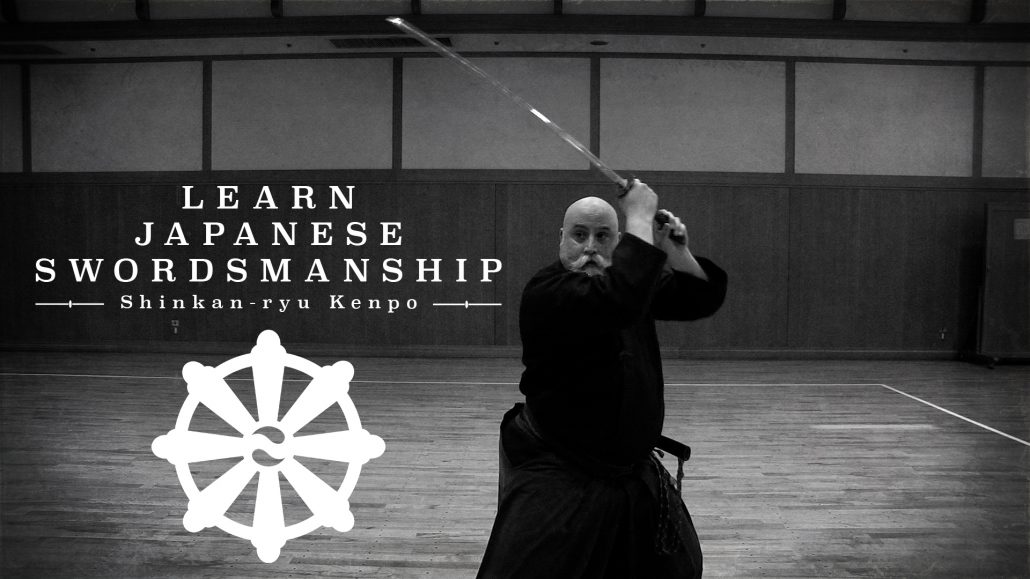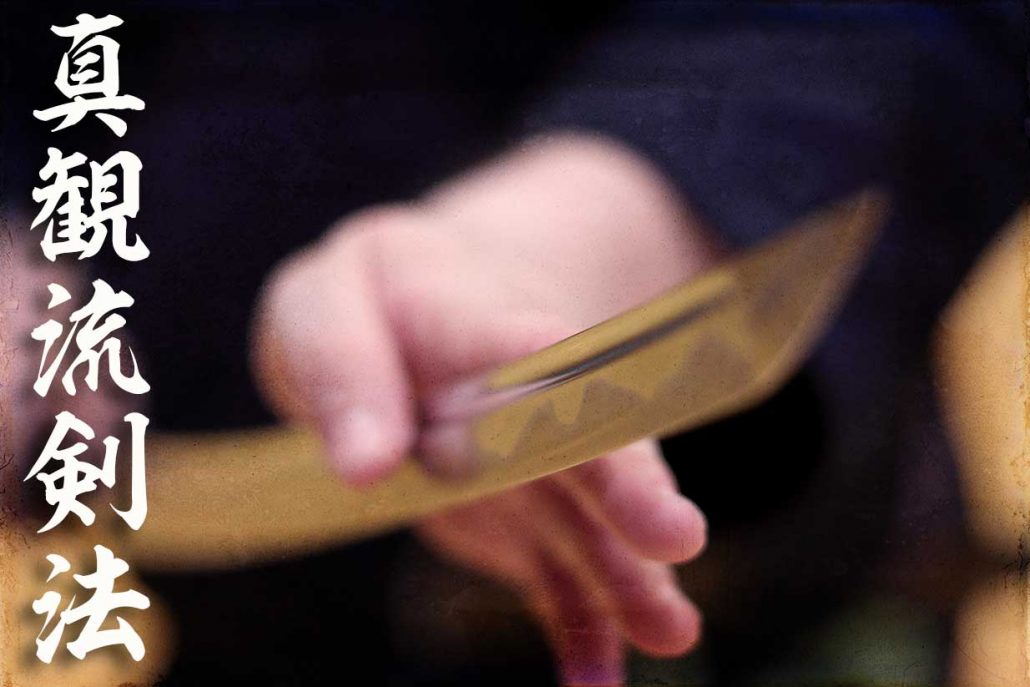How to learn kenjutsu? Learning anything as profound as a martial art needs a teacher. Kenjutsu, while fairly straightforward with a superficial glance, contains a lot of intricate subtleties and nuances. We need a few things to study properly. Firstly a mentor, guide, or teacher. Someone to help us avoid injuring ourselves and to keep us on the right track. We need a clear mind and a true desire to learn. We also need the proper equipment.
There are many styles of Japanese kenjutsu still around today. Although the art of kenjutsu started as a combat skill, it has survived as a martial art even in the age of technology. At least so far it has as of this writing. Kenjutsu has strikes, thrusts, blocks, and parries. Japanese kenjutsu mainly uses the long sword, and most schools practice kenjutsu with a wooden sword called a bokuto (木刀). You might have heard it referred to as a bokken.
There are common bokuto shapes and sizes, but there are also specially shaped bokuto that certain schools use and prefer. Some thin, some straight, and some thick. Some schools like Jigen Ryū often use branches from a tree. Whatever the "sword" it is mainly used as a stand-in for the katana- the sword made famous by the samurai class.

Where to start?
Learning how to hold the swords properly, the basic stances (kamae) and how to move and walk are the first steps. While most kenjustu is quite natural in posture and movement, our bodies and minds are accustomed to the modern lifestyle. So it takes time to adjust ourselves to the more natural and simple postures in kenjutsu. Maybe simple is the wrong word. There is a simplicity to the movements. They are not always easy to grasp in the beginning. Our teacher is extremely important to show us the proper basics. These basics can take a few years to settle in and become second nature.
For practicing one should acquire the correct postures, tenouchi (grips) and movements.
The cuts and thrusts themselves are quite varied. Although there are many different ways to make the cut, there are a pretty standard number of cuts and slices and thrusts. There are basic vertical and diagonal swings. There are lateral cuts, and also thrusts. In total about nine.

Although it seems simple, performing these while you and a partner are moving is complicated. Though seemingly simple on paper, the various ways to perform a thrust are numerous. It is an integral part of learning kenjutsu to strike properly and to be efficient and on target. The angles pictured above are not exact directions and angles as those also differ from technique to technique and from system to system.
The Mind
Yes, we need our minds. More specifically, we need a clear mind. A mind polluted with hatred, for example, is not conducive to learning weapons. Nor is a mind without compassion. We don't need to be a holy person to start learning, but we do need to have a willingness to change and look at ourselves critically. A self-critical and open mind is an asset in learning.
Although we are grabbing a sword and moving around it is less a physical activity than a mental one. Swordmasters through the ages have all said the same thing. The admonishments on refining spirit and character literally fill books and scrolls. Even in the 1600s, the mind was essential to the high-level sword practitioner.
Be prepared for some mental acrobatics to go with the physical ones.
The Sword
It goes without saying that you will need a wooden sword. Best that your teacher recommends the one for the system in which you are studying. Kenjutsu does occasionally use metal swords. These habikitō have their cutting edges dulled. Even rarer are the real sword (shinken) in kenjutsu training. These are best left to the very long-time practitioners. Although some senseless teachers push using a sharp sword in training on their students. There really is no benefit to a beginner using one. Except of course if you are wishing for a quick trip to the hospital.
Training with a bokuto is scary enough. The bokuto is quite deadly, and countless men have died from a good smack over the ages. It's a weapon, not a harmless training tool.
You do not need a hakama to do kenjutsu but certainly will help because the movements wearing traditional Japanese clothing are much different than jogging shorts or contemporary exercise-wear.
Where to start to learn kenjutsu?
Locate a dojo or teacher that can transmit the basics to you well. One thing about kenjutsu is that each school has different goals and philosophies. It is not generic at all. The sword technique from a certain school is a specialty of that system. There is really no such thing as generic kenjutsu. More general sword fighting from Japan is in the form of modern Kendo.
Is it possible to learn online? It is, but you need a partner. It is also important to get direct instruction from your teacher. Learning kenjutsu through Skype or Google hangouts is certainly possible. I myself have had some success teaching kenjutsu to students not physically next to me. It all depends on your own abilities and your teachers. There is a lot you could get started on learning via web-based instruction. It is not impossible.
When in doubt ask those that already study kenjutsu. It is not recommended to just copy what you see online. It is an endeavor that will require a lot of time and sweat. Spending time in one school to understand the techniques is the best and most rewarding idea.

ラジカスキー真照
館長Saneteru Radzikowski is the head sword instructor of Shinkan-ryū Kenpō. He lives and teaches Iaijutsu and Kenjutsu from Nara, Japan.
©2018 S.F.Radzikowski
Sword Grip Tenouchi Iaido Video
This video describes basic hand grips (tenouchi) for using a katana (Japanese sword).
Budo Thoughts
There are techniques and scrolls and teachings all over the dojo. What does it matter...
Attachment, Budo & Impermanence
It is worth a lot to be mindful of the ebb and flow of all...
Mastering The Martial Arts and Basics
I will be talking about basics and mastery. Before I begin, I want to say...
Rei – 礼 – Gratitude In Budo Training Life
Gratitude for our swords and training equipment, and those that made them. To our teachers...
Learning Iaido Online: The Japanese Art of the Sword
Learning Iaido online is a wonderful challenge. Iaido or Iaijutsu can be deceptively simple in its...
Maai Combative Spacing
Maai 間合い Combative spacing or maai is important to investigate early on and come to...
Be Thankful.Be Earnest In Bujutsu & Life
Be thankful for your mistakes, failures, and blunders. They are your own teacher reminding you...
When Protectors Become Perpetrators: Martial Arts Community Failures
Recently, a martial arts instructor (Budo Teacher) faced defamatory accusations in a public forum. A...
Son lo Mismo las Habilidades de Combate y las Artes Marciales?
Porqué hacer la diferencia entre arte marcial y habilidad de combate? Pienso que las habilidades...
A Very Budo Christmas Happy Holidays & New Year
Happy Holidays and Happy New Year to all of you that were kind and supported...
Fear Isolation Martial Arts
Budo does not begin and end when you pass through the dojo, or step on...
Munen Muso And Mushin The Warriors Mind
What is the difference between munen and mushin? These concepts outline the ideal mental state...
How To Avoid Training Pitfalls In Martial Arts
Beware The Rabbit Holes. I want to talk about some pitfalls of martial arts training....
Playing With Sharp Swords
I have been saying it’s important to get training for using a sharp sword or...
Narrow Minds Walk Narrow Paths
Narrow Minds Walk Narrow Paths There are a lot of martial arts to enjoy. There...
Keishi ryu Iaijutsu
In 1888 the Tokyo Metropolitan Police department decided to cull various ryu-ha together to form...
Duping The Gaijin – Martial Arts Fraud
Some Japanese schools or individuals wish to capitalize on the ignorance of non-Japanese martial artists...
Too Many Martial Arts
The koryū of Japan are not self-defense arts. Although they can be authentic and certainly...
How to self-learn sword skills?
How to self-learn sword? A question that pops up in my communications frequently is, “How...
What Is A Good Senpai In Budō?
I have discussed teachers and students within martial arts. The senpai-kohai relationship is just as...
Seven Points For Learning Martial Arts
I am often thinking about how to learn bujutsu productively. The efficiency of body and...
























